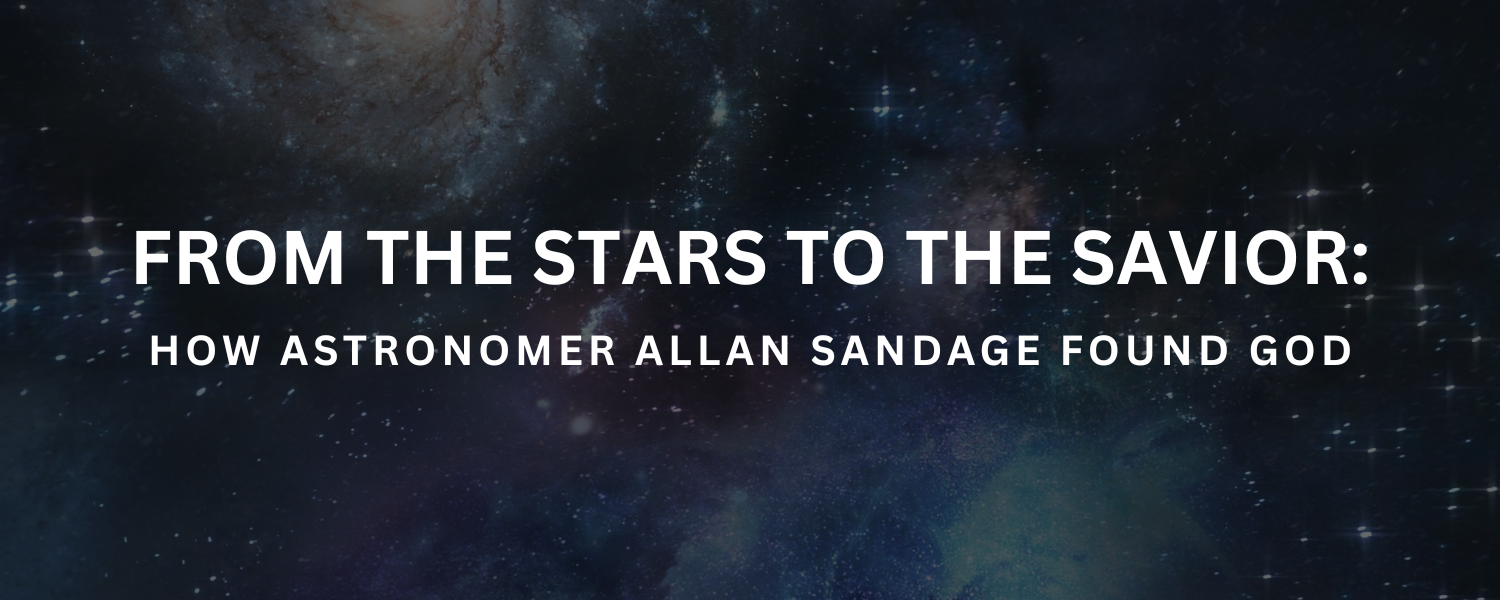From the Stars to the Savior How Astronomer Allan Sandage Found God

Allan Sandage spent his life studying the cosmos—but it was that very pursuit that led him to Christ.
Born in 1926, Sandage was one of the 20th century’s most respected astronomers. A protégé of Edwin Hubble, he carried on Hubble’s work and published the first reliable measurement of the universe’s expansion rate. Over a career spanning decades at the Carnegie Observatories, he authored more than 500 scientific papers and received numerous prestigious awards, including the Crafoord Prize—one of the highest honors in science.
Sandage began his career as an atheist. He once said he wanted to be an astronomer from the age of 8, driven by a fascination with the “magical” world around him—and a desire to explain it in rational terms. As his career progressed, he sought to replace that early wonder with scientific clarity. But something unexpected happened along the way.
The more deeply he studied the universe, the more it appeared not just vast, but finely tuned. Cosmological constants, the precision of physical laws, the origin of the universe itself—none of it seemed like an accident. Science could describe the mechanisms, but it couldn’t explain why there was anything to begin with, let alone a universe governed by order and intelligibility.
Sandage came to see the universe as evidence of intelligent design. He realized that while science could show that the universe is structured, it couldn’t tell us why it exists. That question —why—is what led him to begin reading the Bible, exploring theology, and engaging with the work of Christian thinkers like Blaise Pascal. Pascal’s Wager in particular struck him as a cleareyed rational argument: if God exists, the implications are eternal; if He doesn’t, the loss is minimal.

After decades of wrestling with the evidence, Sandage came to faith.
“I could not live a life full of cynicism. I chose to believe, and a peace of mind came over me,”
he said.
His conversion wasn’t based on emotion or tradition. It was the product of long reflection, evidence, and personal honesty.
“It was my science that drove me to the conclusion that the world is much more complicated than can be explained by science,”
he explained.
“It is only through the supernatural that I can understand the mystery of existence.”
Allan Sandage’s story cuts against the grain. He didn’t abandon reason to believe in God—he followed reason all the way to its source. In a world where faith and science are often painted as enemies, his life offers powerful evidence that the two can—and often do—lead to the same conclusion.
Want to explore this for yourself?
Here are a few questions to consider:
- If the universe had a beginning, what—or who—caused it to begin?
- Why does anything exist at all, instead of nothing?
- Can meaning, morality, or human dignity be grounded without a Creator?
Suggested reading to begin the journey:
- Mere Christianity by C.S. Lewis
- The Reason for God by Timothy Keller
- Can Science Explain Everything? by John Lennox
The journey Sandage took is one anyone can begin. The questions are real, the stakes are high, and the invitation is open.
Be the first to comment